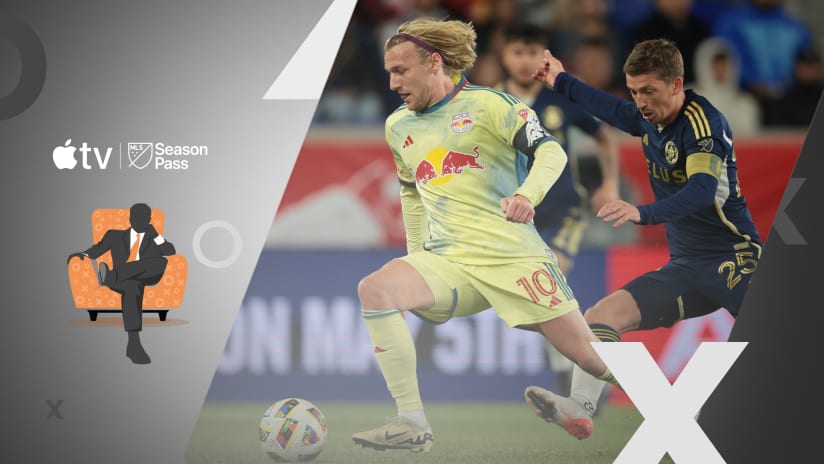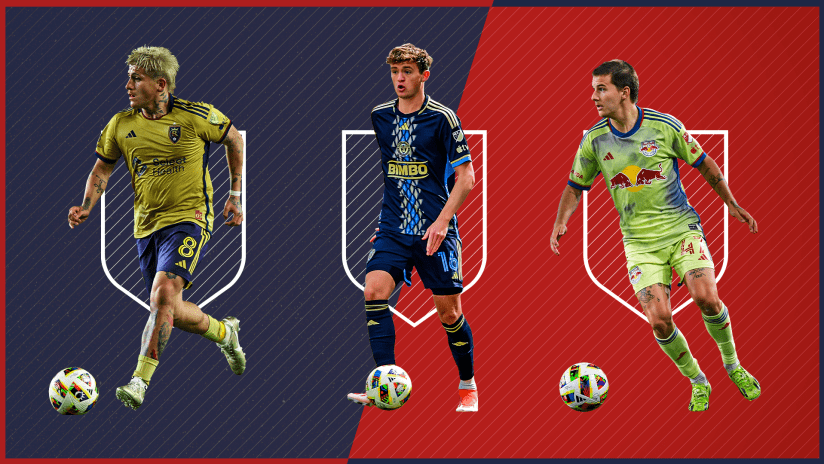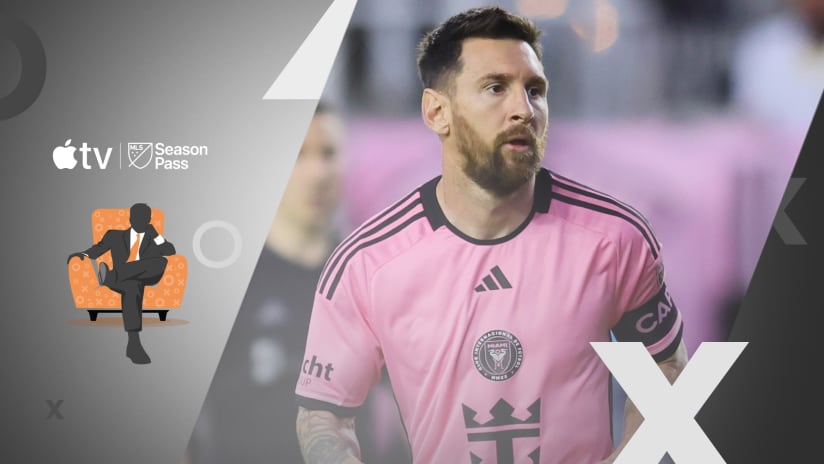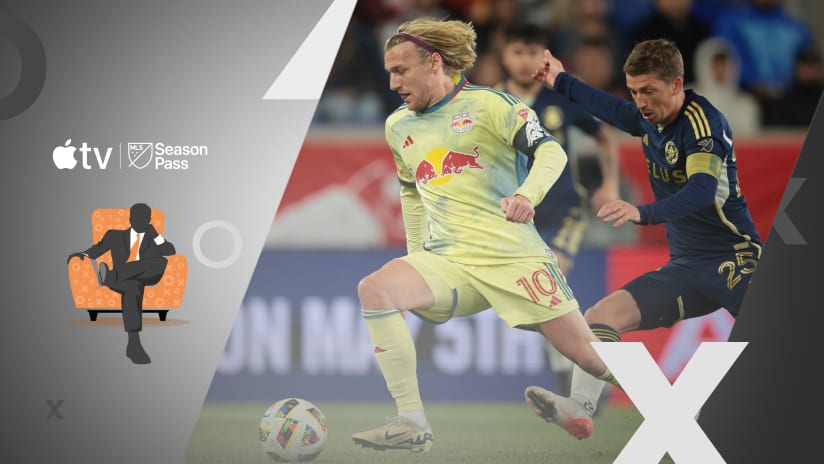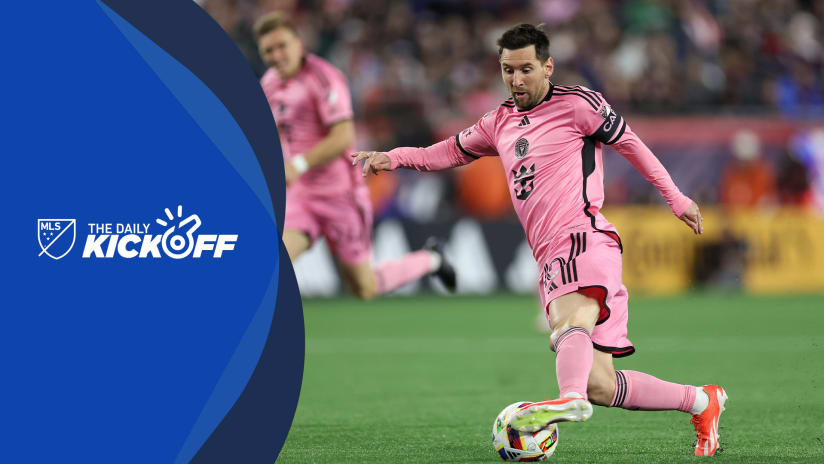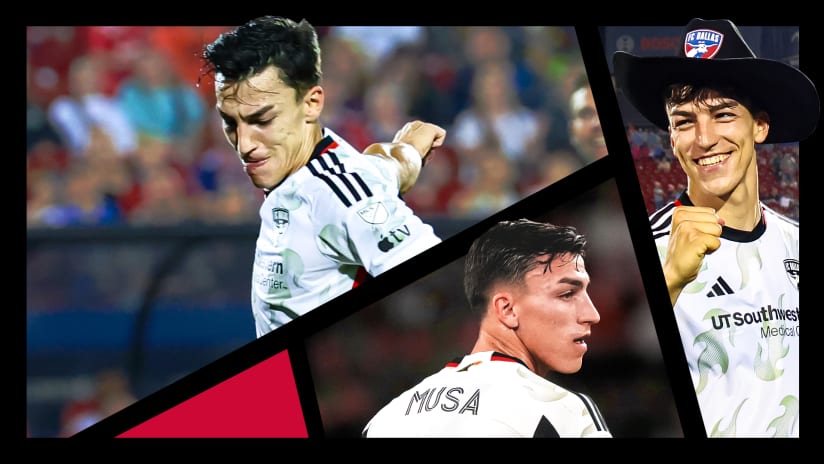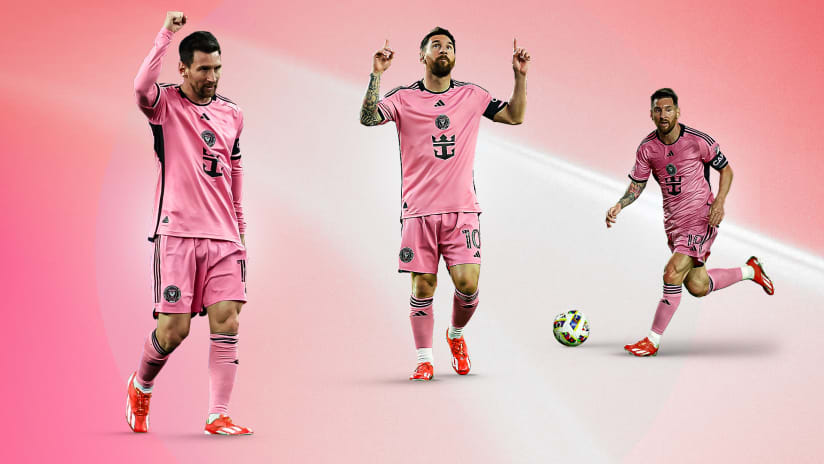ARMCHAIR SPACKLER:In this group, with this crop of players, the World Cup will be a test of how well Jurgen Klinsmann can hide his team's weaknesses.
Editors Note: This story will appear in the next issue of Howler Magazine, available for pre-order now.
EVERY TEAM HAS FLAWS. Every team has cracks that you know so well because you’ve watched every game, every ghastly friendly, every tense World Cup qualifier. You know who’s on form, who’s just a bit off, and who’s finally showing his age. Stare too hard and those cracks become just about all you can see. Such is the life of a fan.

It’s even worse for a coach, especially when your team has more of those little cracks than anyone else in the group – as is the case for the US. How capably Jurgen Klinsmann can cover up those cracks will determine whether his team gets to play three, four, or even more – go on, dare to hope; such is the life of a fan – matches in Brazil.
For all the talk of 4-3-3, Klinsmann has recently been setting up in a 4-4-2, and everything that follows assumes some variation on that; sometimes it looks like a 4-4-1-1 or a 4-2-3-1 in which the central attacking midfielder, usually Clint Dempsey, has free rein to drift into forward positions. The 4-4-2 used against Mexico took the shape of a diamond formation in the midfield. The problem is that every line of the team, from the forwards to the defenders, has glaring weaknesses. There are five big tactical questions Klinsmann will have to answer.
Let’s grab a giant tub of that white gooey paste and get spackling.
1. WHAT TO DO WITH OUR BEST ATTACKER?
For the past dozen years, the US has built its offense around Landon Donovan in the open field. He was world-class on the counterattack, fast and direct, and his ability to pick out and properly weigh his passes at a full sprint was the team’s best weapon.
March to the Match reports from USMNT camp
Click here to download the episode on MP3
The US is still most dangerous when on the counter, but it’s difficult to imagine Donovan, who is now 32, playing 270 World Cup-caliber minutes over the course of a week in the heat of the Amazon. Besides, players like Graham Zusi, Alejandro Bedoya, and Fabian Johnson have shown that they’re stronger defensively, and it’s a fair bet that the US is going to be doing a lot of defending come June. If Klinsmann is wary of playing Donovan wide on the left but still feels that he should be in the starting lineup, it could be as a central playmaker who shuttles between midfield and the forward line. Donovan played here during the Gold Cup last year and it worked.
But the World Cup is a different tournament. Elite teams are very good at denying space to advanced central playmakers, which is why many successful squads – Portugal, Brazil, and Belgium, to name three – deploy their primary creators and scoring threats on the flanks. The best interior midfielders in the modern gameshield the ball, ride a tackle, and spin away from their opponent before playing a pass that opens the defense – the kind of thing you see players like Andrés Iniesta, Luka Modric, and Mesut Özil do multiple times per game.
Donovan needs the kind of space that will be available only on the flanks. Both Zusi and Bedoya have done well on the right side, on both offense and defense. For Donovan, it looks like left midfield or bust. This summer was setting up to be his last lead role on the big stage, but it’s increasingly possible that he’ll be cast for a bit part.
2. WHO WILL PROVIDE THE WIDTH?
No matter who plays on the left wing, he won’t be streaking down to the touchline and whipping in crosses. The width in Klinsmann’s attack comes from the left back. That has been the case for the past two years, especially during the hexagonal after DaMarcus Beasley won the starting job. Beasley is quick, smart, and tireless, and he has earned a degree of autonomy in going forward that none of the right fullbacks seem to approach.
Beasley plays as a wingback for Puebla in Mexico, and his end-line-to-end-line daring is something he brings to the game no matter the formation. Anytime the US has played a 4-4-2, 4-2-3-1, or variation thereof, and Beasley has been on the field, it has resembled more of a 3-5-2 or even the 3-6-1 that Steve Sampson innovated for the 1998 World Cup (gulp!).
But what happens if the opposing right winger removes him as an offensive threat? That’s how it’s done against the 3-5-2, which went out of style for a good decade because teams playing a 4-4-2 learned that occupying the flanks high up the pitch can warp the 3-5-2 to look more like a 5-3-2. Any decent scout will tell his team to attack the left side of the US if Beasley or Fabian Johnson, the other option in that spot, is in the lineup.
This is where Donovan could find his moment. He’s never been the type to control a game, but he’s adept at noticing areas of advantage (and disadvantage) and getting himself into position to help his team. This has usually been in the attack, but the left midfielder, whether it’s Donovan or someone else, will have to be able to recognize when the left back is being overwhelmed and slide to the touchline to help.
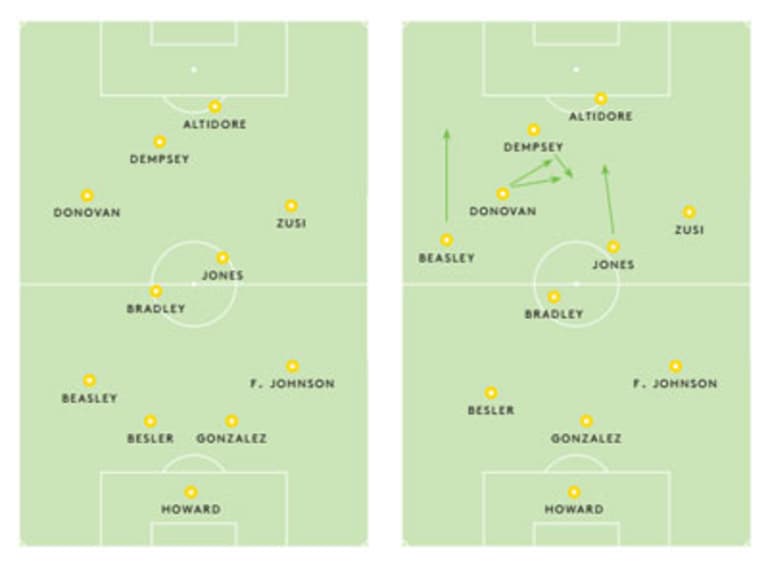
In other words, the verticality Klinsmann needs from his left back will demand horizontal awareness from the left midfielder. All three players most likely to be involved – Beasley, Donovan, and Johnson – are smart enough to figure this out on the fly and adjust as the game changes shape and tempo around them.
3. WHO RUNS THE MIDDLE?
On paper, Klinsmann’s best midfield combo is Michael Bradley and Jermaine Jones. On grass, it hasn’t always worked out that way.
The main problem is in possession, where Jones is consistently reluctant to pass first-time to his teammates’ feet, too often breaking the rhythm for a team that often finds it difficult to create any. The ability to retain the ball and string together passes is always important at the international level and will be especially so in a place as hot and humid as Manaus.
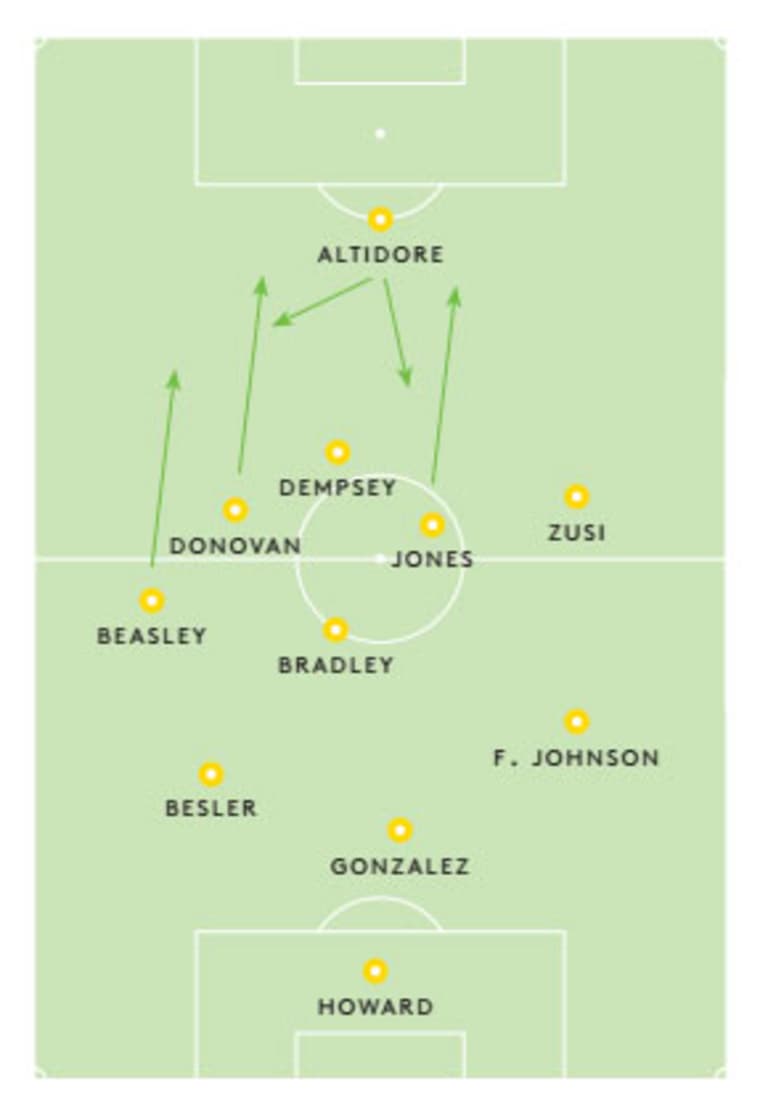
Jones also likes to dribble, especially when he gets the ball in the center-right channel. That’s the area of the pitch where Bradley happens to be at his best, and Bradley is better than Jones both in traffic and in delivering the final pass. You could argue that he has overtaken Donovan as the US’s best chance creator. It’s important for him to see a lot of the ball where he can be most effective.
Yet, when Bradley and Jones line up together, it’s Jones who more often operates in that zone. Over the past three years, he has been the only midfielder in CONCACAF to consistently neutraliz Michael Bradley.
But the US might not have the ball all that much anyway, right? All we’ll need to do is bunker and break.
Wrong. We’ll have it plenty, because Ghana and Portugal will primarily want to hit us in transition. Germany will probably hold the run of play, but they, too, will counterattack us to death if that becomes an option.
So precision with the ball and the ability to keep positional discipline without it will be vital. The simplest solution for the US might also be the most far-fetched: dropping Jones, one of Klinsmann’s favorite players, for Kyle Beckerman.
Beckerman has gone from the fringes of the roster to the fringes of the starting lineup over the past year. His performance in April’s friendly against Mexico, where he played as a true number six behind Bradley in the diamond, allowed his partner some freedom to roam the field. Also important: nobody on the US team is better at creating or maintaining the tempo of the game from that defensive midfield spot.
With Beckerman in the lineup, there’s no doubt that the midfield belongs to Bradley. He’s the key US player, and it’s not a bad thing to build your chances of success around that.
4. HOW CAN WE NEUTRALIZE RONALDO?
Maximizing your own team’s strengths can give a coach sleepless nights. The true nightmares come when you have to figure out a way to deal with some of the best teams and players in the world, and there is no greater nightmare in that world right now than Cristiano Ronaldo, ball on his foot, at full throttle against a backpedaling defense.
Our other Group G opponents are also very dangerous on the wings. Ghana’s André Ayew and André Schürrle of Germany aren’t in Ronaldo’s class – who is? – but as Ukraine showed in March, you don’t have to be that good to undress the US defense. Andriy Yarmolenko embarrassed our deep-lying midfielders (Jones and Sacha Kljestan), while the central defenders (Oguchi Onyewu and John Anthony Brooks) couldn’t figure out how or when to pick him up. Yarmolenko plays as an inverted winger – a wide attacker who prefers to cut inside instead of flaring outside to bend in crosses – and slowing down inverted wingers is Defensive Tactics 101 for the modern game.
So recall Yarmolenko. Now close your eyes and imagine Ronaldo a step and a half ahead of Jones, bearing down on a backpedaling Matt Besler.
Oh. Dear. God.
Back in February 2013, Ronaldo was in white and David Moyes’s reign of terror was but a glint in Sir Alex Ferguson’s eye. Real Madrid was expected to ease past Manchester United in the Champions League round of 16. How did Ferguson deal with Ronaldo? He pulled the oldest trick in the book and man-marked him. Phil Jones tracked Ronaldo all over the field. The Portuguese winger still scored, because he’s amazing, but Jones frustrated him, and Madrid made the mistake of trying to force play through their superstar even though he was largely smothered.
There’s no foolproof way to stop Ronaldo. But teams at a talent disadvantage have found that they can slow him down if they’re willing to be unfashionable.
Who is our Phil Jones? Maurice Edu, with his athleticism and two-footedness, could fill that role. Whether it’s for 90 minutes (unlikely) or as a sub, Edu can track some of the excellent inverted wingers the US will face in the group. A bonus: In possession, he has no problem playing a secondary role and letting Bradley conduct the midfield.
5. WHAT’S WRONG WITH JOZY?
Say what you want about Jozy Altidore’s performances for Sunderland – and if you want to see some of the most vile comments imaginable, just do a Twitter search for his name on match day – he’s usually been able to avoid dragging his club form with him when he suits up for the US.
It’s impossible not to draw something of a straight line between the lack of service he’s getting with his club and the lack of service he will likely experience for solid chunks of the games against Portugal and Germany. (Ghana will beg us to hold possession.) How, then, does he avoid becoming a lone forward floating in a sea of defenders?
Altidore will take the blame (or the praise), but in truth his effectiveness will depend on the play of the cluster of attackers behind him. He will be asked to stretch the field, creating space behind him. What happens in that space is largely up to his teammates. If the defenders marking our center forward know that the only penetration is going to come from him, they can deal with it. But if they have to worry about a second run out of the midfield – especially one that could split the center backs – then they’ll make their zone softer, allowing Altidore (or whomever) a little more space to receive and combine with teammates.
However, Dempsey, who will likely be in that central playmaking role, tends to be ball dominant, drifting toward the ball when the US has possession rather than into space. If Altidore is stifled, one explanation will be that none of the US midfielders were troubling the back line with their runs.
Altidore has proved this year that he’s not an English-style center forward. Pinging long balls in the general direction of his head is a losing tactic for any team. Klinsmann, to his credit, seems to recognize this. The US does a better job than Sunderland of keeping the ball on the ground and connecting passes. If Bradley is free to make early runs out of midfield, taking some of the defense’s attention away from Altidore, the attack will be much more effective. This is another advantage of both the diamond midfield and Kyle Beckerman’s presence from the start.


